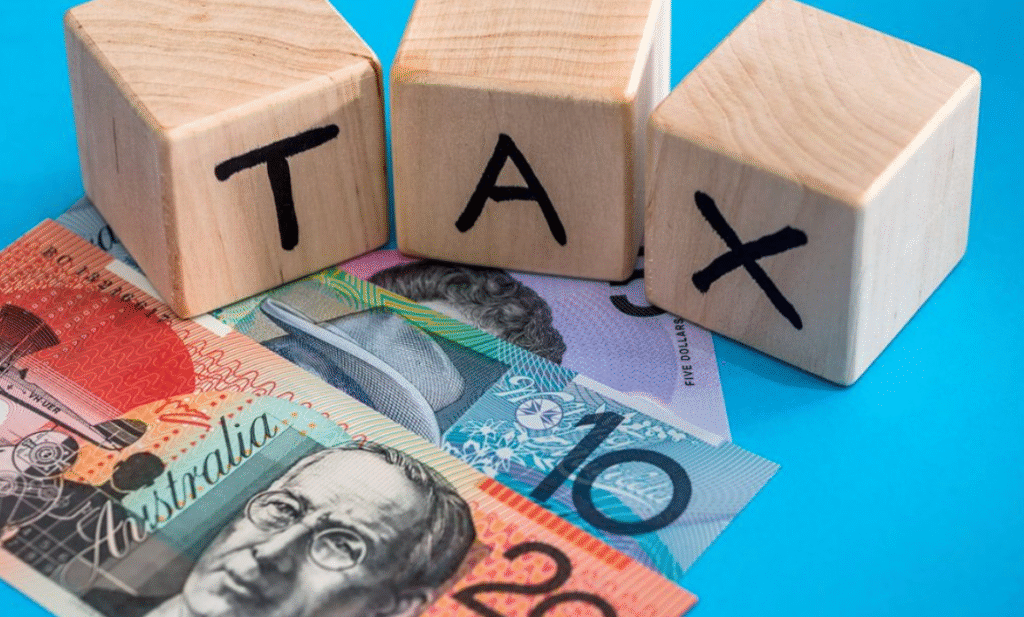Table of Contents
Introduction
Australia’s corporate tax system in 2025 reflects a balance between fostering domestic business growth and aligning with international tax standards. This article provides an overview of the current corporate tax rates, recent reforms, and their implications for businesses operating in Australia.
📊 Current Corporate Tax Rates
As of the 2025–26 financial year, Australia’s corporate tax rates are structured as follows:
- Base Rate Entities: Companies with an aggregated turnover of less than AUD 50 million are subject to a tax rate of 25%.
- Other Companies: Companies exceeding the AUD 50 million turnover threshold continue to be taxed at the standard rate of 30%.
This tiered approach aims to support small and medium-sized enterprises (SMEs) by providing a reduced tax burden, thereby encouraging reinvestment and growth within the domestic economy.

🌐 Implementation of Global and Domestic Minimum Taxes
In alignment with the OECD/G20 Inclusive Framework on Base Erosion and Profit Shifting (BEPS), Australia has enacted legislation to implement a 15% global minimum tax for large multinational enterprises (MNEs) with annual global revenues of EUR 750 million (approximately AUD 1.2 billion) or more.
Key components include:
- Income Inclusion Rule (IIR): Effective for fiscal years starting on or after 1 January 2024, this rule ensures that Australian parent entities of MNEs pay a minimum level of tax on income earned by their foreign subsidiaries.
- Undertaxed Profits Rule (UTPR): Set to apply from fiscal years starting on or after 1 January 2025, this rule allows Australia to tax profits of foreign entities within an MNE group that are undertaxed in other jurisdictions.
- Domestic Minimum Tax (DMT): Also effective from 1 January 2024, the DMT ensures that large MNEs pay at least 15% tax on income generated within Australia, preventing profit shifting to lower-tax jurisdictions.
These measures aim to protect Australia’s tax base and promote fair competition by ensuring that large MNEs contribute a minimum level of tax regardless of their global operations.
💼 Incentives for Innovation and Investment
To stimulate innovation and attract investment, Australia offers several tax incentives:
- Patent Box Regime: Introduced to encourage the development and commercialization of Australian medical and biotechnology innovations, this regime taxes eligible income derived from patents at a concessional rate of 17%.
- Research and Development (R&D) Tax Incentive: This program provides tax offsets for eligible R&D activities, reducing the effective cost of innovation for businesses.
These incentives are designed to enhance Australia’s competitiveness in high-tech and research-intensive industries.
📈 Recent Trends and Business Implications
The 2025–26 Federal Budget indicates a shift in the tax burden, with personal income tax revenues projected to rise by 27% over the next few years, while company taxes are expected to increase by only 6%. This trend suggests a growing emphasis on individual taxpayers to support public finances, potentially impacting consumer spending and overall economic growth.
Business leaders have expressed concerns over Australia’s high corporate tax rates compared to international standards, particularly in the context of competing with countries like the United States, which offer more business-friendly tax environments. Calls for further tax reforms and policy support continue to be a focal point for enhancing Australia’s economic competitiveness.
📌 Conclusion
Australia’s corporate tax system in 2025 reflects a commitment to supporting SMEs, aligning with global tax standards, and fostering innovation through targeted incentives. However, balancing these objectives with the need to maintain a competitive tax environment remains a challenge. Ongoing dialogue between policymakers and the business community is essential to ensure that Australia’s tax policies effectively promote economic growth and fairness.